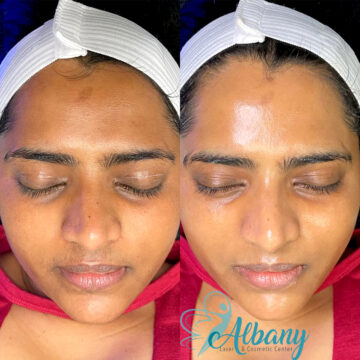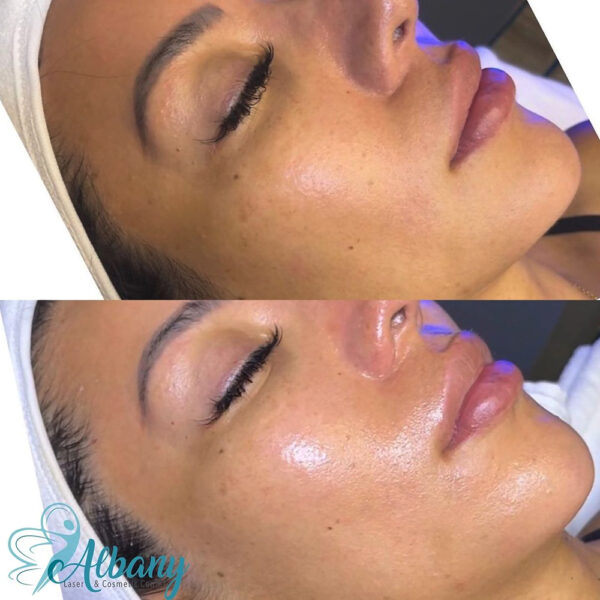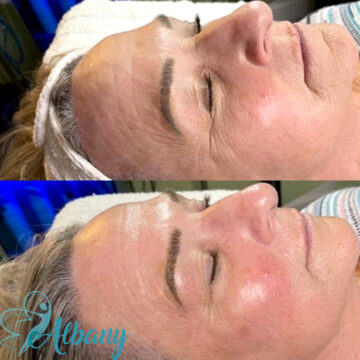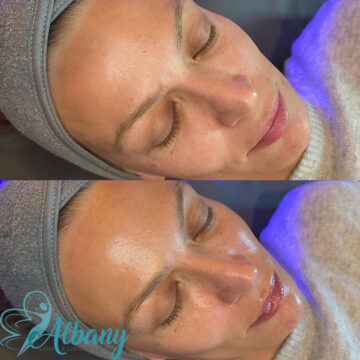Blackheads and Whiteheads Treatment Edmonton
Blackheads and whiteheads Edmonton are two of the most common types of acne lesions. These small, raised bumps on the skin can be frustrating and can have a significant impact on a person’s self-esteem and confidence. While blackheads and whiteheads may appear similar, they are caused by different factors and require different acne treatments.
Understanding Blackheads and Whiteheads
Blackheads and whiteheads, collectively known as comedones, are types of acne lesions resulting from clogged hair follicles. Blackheads (open comedones) occur when a pore is clogged with oil and dead skin cells, and the exposure to air causes the material to oxidize and turn black. Whiteheads (closed comedones) form when the clogged pore remains closed, leading to a white or flesh-colored bump. Both can be effectively managed with appropriate treatments and skincare routines.
Professional Treatments Available At Albany Cosmetic and Laser Center
Various professional treatments are available to address blackheads and whiteheads:
- Chemical Peels: Application of chemical solutions to exfoliate the top skin layers, promoting new skin growth and unclogging pores.
- Hydrafacial: A minimally invasive procedure that exfoliates the skin, removing dead skin cells and clearing clogged pores.
- Laser Therapy: Utilizes focused light to reduce oil production and target bacteria, effectively treating acne lesions.
- Manual Extractions: Performed by professionals to safely remove blackheads and whiteheads without causing skin damage.
Blackhead and Whitehead Edmonton Treatments Results




Professional acne treatments can significantly improve skin clarity by addressing blackheads and whiteheads. Patients often notice a reduction in the number and size of these blemishes after undergoing procedures such as chemical peels, microdermabrasion, or laser therapies. The recovery timeline varies depending on the treatment’s intensity, but many individuals see noticeable improvements within a few days to weeks. Consistent aftercare and maintenance are essential to sustain the results and prevent future breakouts.
Treatment Infographic Summary
Treatment Preparation and Aftercare Timeline
3 to 7 Days Before (Preparation)
- Maintain a gentle skincare routine; avoid new products that may irritate the skin.
- Discontinue use of exfoliants or retinoids unless advised otherwise.
- Stay hydrated and follow a balanced diet to support skin health.
Treatment Day (What to Expect)
- Arrive with a clean face, free from makeup or heavy skincare products.
- Our team will cleanse the skin and may apply a topical numbing agent for certain procedures.
- The chosen treatment will be performed, typically lasting between 30 to 60 minutes.
1 to 7 Days After (Immediate Aftercare)
- Some redness or mild swelling may occur; this is normal and should subside within a few days.
- Follow the provided aftercare instructions, including the use of recommended skincare products.
- Avoid direct sun exposure and apply sunscreen regularly.
7 to 14 Days (Ongoing Aftercare)
- Continue with a gentle skincare routine to maintain results.
- Refrain from using harsh exfoliants or undergoing other facial treatments unless approved.
- Attend any scheduled follow-up appointments to assess progress.
3 to 6 Months (Long-Term Maintenance)
- Maintain regular skincare routines, incorporating products that prevent pore congestion.
- Consider periodic professional treatments to sustain skin clarity.
- Consult with our specialists for personalized advice on long-term skin health strategies.